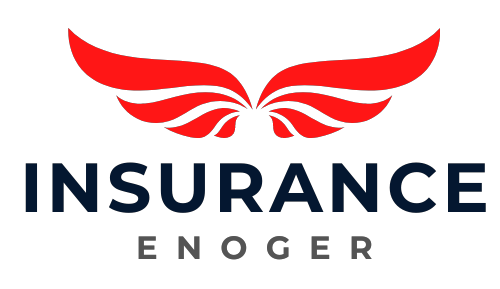Effective injury prevention in the workplace greatly decreases the claims for workers’ compensation. Safety measures involve regular risk assessments, employee training, and many other things that are crucial in uncovering the causes of an accident before it happens. A good safety culture encourages employees to be more willing to report any unsafe conditions in the workplace, hence creating awareness and managing risks proactively. Smaller injuries imply smaller claims and, as a result, insurance premiums that stabilize your financial position. By prioritizing safety, you can boost morale and productivity among employees and create benefits for your organization that may last long after the program has started. It is in understanding the details behind such strategies that you find certain nuggets of wisdom helpful to optimize your workplace safety efforts.
Workplace Safety: Why It Matters
Safety at work is not only a legal requirement but also forms part of the essential ingredients for a successful business. Actually, it can increase productivity and morale that consequently may ensure a better retention of the personnel. In trying to make the workplace as secure as possible, then you allow the growth of your team and give them an ability to excel in their respective performances, since they will be well away from hazardous incidents.
The risk assessments are done to find weaknesses in your operations. You go through every part of your workplace to identify where there is a chance or a likelihood of risk, and thus take action that mitigates them. As a matter of fact, identification of hazards helps you to be one step ahead of any problems; it creates an environment respectful and caring about staff.
Most importantly, a firm commitment to workplace safety can help reduce costs resulting from accidents and injury, which directly affects your bottom line positively. When you commit to safety training and resources, you go beyond mere regulatory compliance and create a culture of safety that radiates among the workforce.
This proactive approach may result in fewer claims filed under workers’ compensation, thereby preserving your financial health.
Key Strategies for Prevention of Injuries
Some of the key injury prevention strategies must be included for ensuring a safe working environment. Firstly, one should take into consideration conducting frequent ergonomic assessments. It will help in identifying the work-related risk factors that could cause musculoskeletal disorders. Assess the workstations and tasks of the workers, and if needed, modify the setup to create maximum comfort and minimize strain.
Another very important strategy involves hazard identification. By always looking around at your workplace for slippery floors, poor lighting, or equipment that doesn’t work right, you are able to take some kind of action before they can cause an accident to happen. Let your employees be involved in the process, after all; many times they know just what type of hazards they are under day in and day out.
In addition, institutionalize a safety culture where employees are never under threat of intimidation when reporting unsafe conditions. Through this proactive approach, everyone will be responsible for implementation and injury rates will be lowered.
Training and Education Programs
Good training and education programs are worthy investments that are regularly made to provide a safe environment and to reduce injury incidence. With comprehensive training, you will be equipping your personnel with knowledge and techniques that can help them recognize hazards and take proper responses. Apart from enhancing safety, it ensures accountability because of this proactive approach.
Adding ergonomic assessments to your training will ensure that workers know how to set up their workstations in such a way to minimize strain and discomfort; this can greatly reduce the incidence of musculoskeletal injuries, considered some of the most common across many industries.
Regular safety drills prepare employees for an incident, if one occurs, and ingrain the need for quick and effective responses to whatever could occur.
In addition, ongoing training keeps safety procedures on the minds of all parties concerned. You can tailor programs to address specific risks associated with certain job functions, which also makes them more effective and engaging.
Establish a Safety Culture
A commitment to safety at all levels of organization provides a setting whereby employees can make sure their safety and that of others is catered for. Safety culture involves an example that needs to be proved right from effective leadership in safety. When leaders are genuinely committed to safety, this sets the tone for the whole organization.
Employees are more likely to participate in safety when their leaders visibly take part in the processes of safety or value their input on safety.
Engaged employees protect themselves from injuries through a system of safety culture. Permit open communications about safety concerns, and let it be known that everyone’s opinion counts. Employees are much more apt to report hazards and suggest improvements when they feel they will be heard. This would lead to a proactive approach toward injury prevention.
Additionally, the process of identifying and rewarding safe behaviors reinforces in the minds of the workers the essence of safety in daily operations. Such recognition boosts morale and helps employees become closer to management on the issue of safety.
Insurance Premiums

Emphasize safety at work to bring down your organization’s insurance premiums. This means that besides protecting your workforce with efficient injury prevention strategies, you also minimize claims reporting. With fewer claims, it means less cost for the insurance provider, which may be passed down to businesses as reduced premiums.
It involves proper risk assessments. Understanding associated risks and taking mitigation measures in advance will help in minimizing workplace injuries. This will give a safer environment to your team for work and also show your insurers that you take the safety of your workplace seriously.
Many times, an insurance company will incentivize those businesses with lower premiums for taking initiative in decreasing the risk involved. This is showing due diligence in attempting to eliminate or reduce the chance of future claims. A history of minimal reported claims in your portfolio will continue to help and develop a positive risk profile, thus positioning your organization more favorably toward underwriters. Again, this can mean some form of competitive pricing and/or additional value with increasing coverage levels.
Basically, if you value workplace safety and proactively manage risk, you will generate a financial competitive advantage and at the same time contribute to a culture of wellness for your workers. All in all, this impact of insurance premiums is a very tangible benefit of keeping your attention on preventing injuries.
Long-term Benefits to Employers
Employers who invest in effective workplace injury prevention strategies realize significant long-term benefits beyond the more obvious immediate safety improvements. You will be able to capitalize on improved morale amongst employees and encourage a culture of care throughout your organization.
If workers feel safe, then often productivity soars incredibly, operations become more efficient, and overall performance improves.
Better safety also means extremely high retention rates. Of course, people want to stay longer with a company where the employer cares about their life. Lower turnover consequently reduces replacement costs and, finally, brings more experience into the team.
All this stability is important in sustaining economic stability in view of the fact that seeking and training new workers can be quite costly.
Also, effective injury prevention is in line with compliance issues, thus enabling you to avoid costly fines and litigation. Proactive management of risks eliminates potential liabilities that will make your workplace safer and protect your bottom line.
Over the long haul, high employee morale combined with increased productivity, better retention rates, and sound risk management strategies result in a resilient organization that can thrive in competitive landscapes.
Prioritizing workplace safety is not only a legal obligation but also an intelligent investment in the future of your company.
Conclusion
Give effective injury prevention at the workplace your attention, and your bottom line will be protected simultaneously. Imagine no on-the-job injuries, reduced insurance premiums, and a high morale amongst your employees. An investment in strategies for safety and training is not merely an expense but a sure path to success and long-term stability. Don’t wait until there is an incident; instead, take proactive steps today toward making conditions safer and enjoy all the benefits that come with it.





